Halogen-Free Epoxy Resin Explained for Industry Professionals
What is Halogen-Free Epoxy Resin?
Halogen-free epoxy resin is a type of epoxy resin with a low halogen content. This section explains its standards and importance.
Halogen-Free Standards
Materials with a halogen content lower than the specified amount are called halogen-free. The standard, defined by the International Electrotechnical Commission (IEC), is known as "IEC 61249-2-21":
• Chlorine ≤900 ppm
• Bromine ≤900 ppm
• Total halogen ≤1500 ppm
Source: IEC 61249-2-21 for Halogen Free | MasterBond.com
Why is it becoming important?
Using conventional epoxy resin can lead to issues caused by the halogen compounds it contains. For example, when printed circuit boards are used for a long time, the generation of halogens can corrode the wiring, reducing insulation properties. Additionally, harmful gases derived from halogens may be emitted during combustion or the curing process, leading to health hazards and air pollution.
In the European Union (EU), there are restrictions on the use of flame retardants containing halogens from a recycling regulation perspective. Thus, there is a growing importance of using halogen-free epoxy resin with low halogen content to ensure product reliability and consideration for both people and the environment.
Benefits of Using Halogen-Free Epoxy Resin in the Electronics Field
Using halogen-free epoxy resin in the electronics field offers product reliability as well as environmental and safety benefits.
Improved Reliability
Using halogen-free epoxy resin in electronic devices such as circuit boards prevents corrosion caused by halogens. This leads to improved reliability compared to conventional epoxy resin, promoting long-term use.
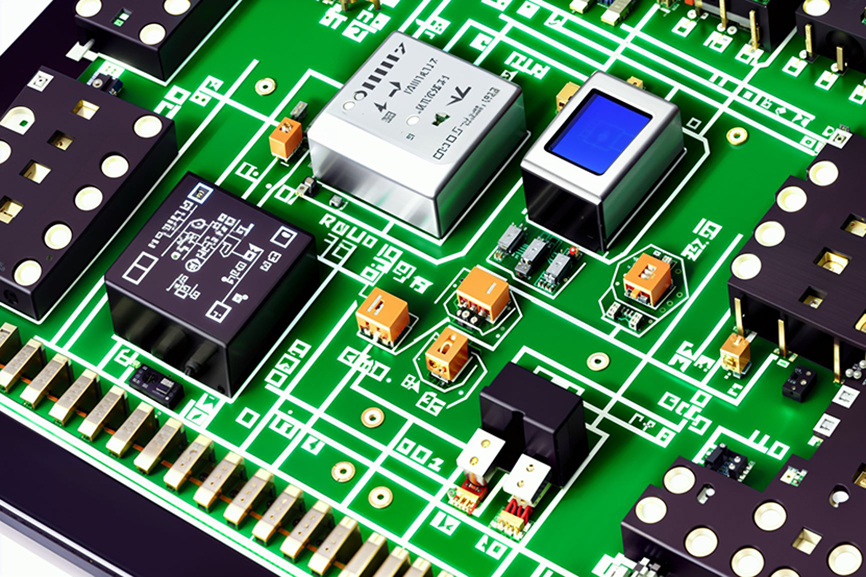
Environmental Benefits
Using halogen-free epoxy resin reduces the emission of harmful substances and gases during use and combustion, preventing environmental pollution and adverse health effects.
Since July 1, 2006, the EU Restriction of Hazardous Substances Directive has mandated that parts and materials used in electronic devices must not contain harmful substances such as lead, mercury, and cadmium. Using environmentally friendly materials can increase consumer trust and enhance the value of a company's products.

DENACOL's "Low Chlorine Epoxy Resin Grade" and Applications
We are developing DENACOL low chlorine types, with products ranging from chlorine content of 100 to 5000 ppm. This grade can be used as reactive diluents for electronic materials, coatings and other applications where quality deterioration of may become a problem due to chlorine.
Reactive Diluents
Reactive diluents reduce the viscosity of high-viscosity epoxy resins without significantly compromising their properties, improving their handling. Particularly in electronic materials, low-viscosity, halogen-free epoxy resins are suitable as reactive diluents to mitigate the quality deterioration caused by chlorine emissions.
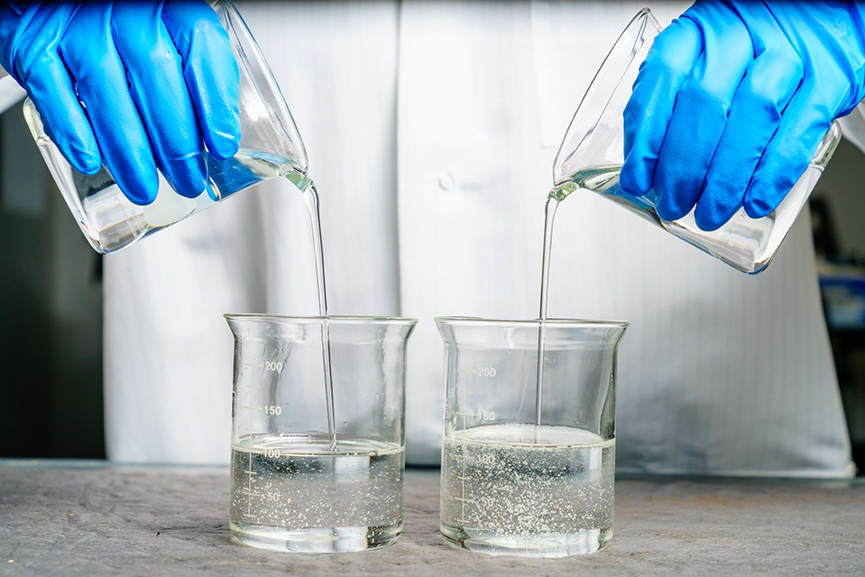
Related article
Resin Stabilizers
Resin stabilizers are used to catch of chlorine that is desorbed from chlorine-based resins (prevents resin deterioration). For instance, using halogen-free epoxy resin in the refrigerant oil of air conditioners helps maintain oil quality and prevents chlorine-induced rust inside the pipes, thereby reducing degradation.

Related article
Adhesives
Adhesives are used to fix components on printed circuit boards. Using halogen-free epoxy resin can prevent quality deterioration caused by chlorine emissions.

Introduction to Low-Chlorine DENACOL Types
This section introduces low-chlorine DENACOL types by their functional groups. Select and consider using the DENACOL type that best fits your needs.
Multifunctional Types
The multifunctional types include"EX-321L" and "EX-1610."
EX-321L
This product is a multifunctional aliphatic epoxy compound known as trimethylolpropane polyglycidyl ether. It is a multifunctional, hydrophobic compound with low viscosity, and it is highly reactive, making it suitable as a reactive diluent for electronic materials.
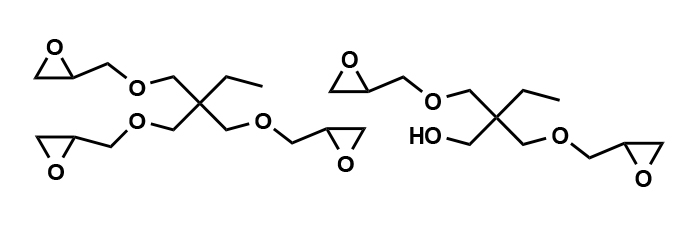
SWIPE
| Epoxy equivalent (g/eq.) |
Viscosity (mPa・s) |
Total chlorine content(%) |
Color value (APHA) |
Water solubility(%) | Packaging |
|---|---|---|---|---|---|
| 130 | 300 | 0.3 | 30 | insoluble | 18kg |
EX-1610
This product is a multifunctional aliphatic epoxy compound with an undisclosed structure. It has high water solubility and reactivity, making it suitable as a crosslinking agent for coatings and adhesives.
SWIPE
| Epoxy equivalent (g/eq.) |
Viscosity (mPa・s) |
Total chlorine content(%) |
Color value (APHA) |
Water solubility(%) | Packaging |
|---|---|---|---|---|---|
| 170 | 2,200 | 0.5 | 1 | 100 | 18kg |
Difunctional Types
The difunctional types include "EX-212L","EX-214L","EX-810P""EX-991L","EX-201-IM."
EX-212L
This product is a difunctional aliphatic epoxy compound known as 1,6-Hexanediol diglycidyl ether. It is hydrophobic, has low viscosity, and is suitable as a reactive diluent for electronic materials.
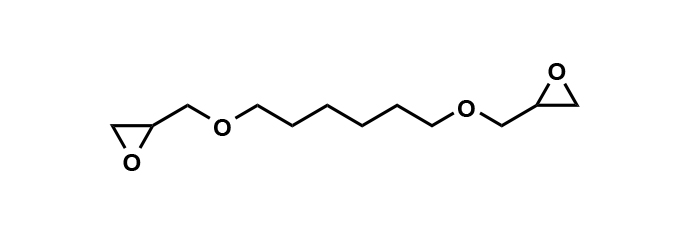
SWIPE
| Epoxy equivalent (g/eq.) |
Viscosity (mPa・s) |
Total chlorine content(%) |
Color value (APHA) |
Water solubility(%) | Packaging |
|---|---|---|---|---|---|
| 135 | 15 | 0.4 | 40 | insoluble | 18kg |
EX-214L

This product is a difunctional aliphatic epoxy compound known as 1,4-Butanediol diglycidyl ether. It has water solubility, low viscosity, and flexibility, making it suitable as a reactive diluent for electronic materials.
SWIPE
| Epoxy equivalent (g/eq.) |
Viscosity (mPa・s) |
Total chlorine content(%) |
Color value (APHA) |
Water solubility(%) | Packaging |
|---|---|---|---|---|---|
| 115 | 15 | 0.3 | 1 | 100 | 18kg、200kg |
EX-810P
This product is a difunctional aliphatic epoxy compound known as ethylene glycol diglycidyl ether. It has water solubility, low viscosity, and flexibility, making it suitable as a water-soluble resin crosslinking, hydrophilic, and flexibility agent for electronic materials.
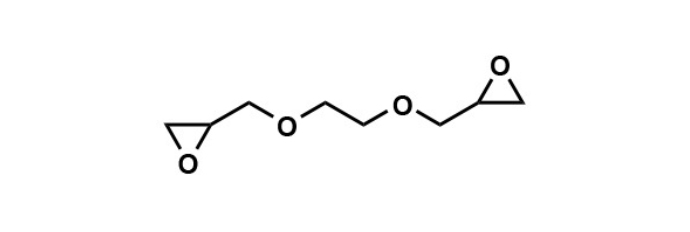
SWIPE
| Epoxy equivalent (g/eq.) |
Viscosity (mPa・s) |
Total chlorine content(%) |
Color value (APHA) |
Water solubility(%) | Packaging |
|---|---|---|---|---|---|
| 95 | 10 | 0.01 | 10 | 100 | 20kg |
EX-991L
This product is an undisclosed difunctional epoxy compound. It is hydrophobic and flexible, making it suitable as a resin crosslinking agent and flexibility agent for electronic materials.
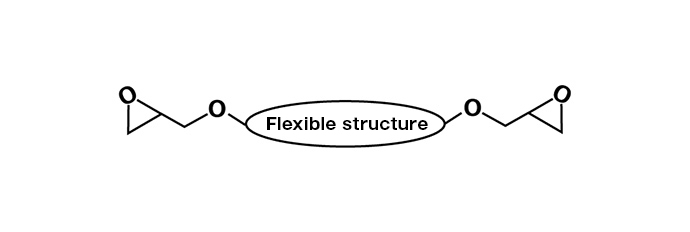
SWIPE
| Epoxy equivalent (g/eq.) |
Viscosity (mPa・s) |
Total chlorine content(%) |
Color value (APHA) |
Water solubility(%) | Packaging |
|---|---|---|---|---|---|
| 450 | 180 | 0.1 | 200 | insoluble | 18kg |
EX-201-IM
This product is a difunctional epoxy compound known as resorcinol diglycidyl ether. It is hydrophobic and suitable for adhesives in electronic materials.
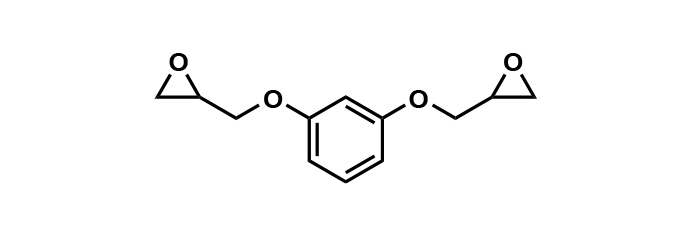
SWIPE
| Epoxy equivalent (g/eq.) |
Viscosity (mPa・s) |
Total chlorine content(%) |
Color value (APHA) |
Water solubility(%) | Packaging |
|---|---|---|---|---|---|
| 120 | 400 | 0.06 | 5 | insoluble | 20kg |
Monofunctional Types
The monofunctional types include "EX-121","EX-141","EX-142-IM","EX-146P."
EX-121
This product is a monofunctional aliphatic epoxy compound known as 2-Ethylhexyl glycidyl ether. It is hydrophobic and has low viscosity, making it suitable as a resin stabilizer and reactive diluent.
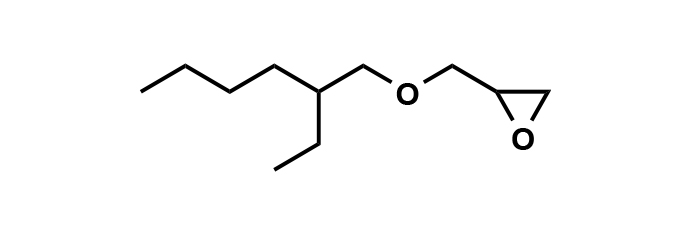
SWIPE
| Epoxy equivalent (g/eq.) |
Viscosity (mPa・s) |
Total chlorine content(%) |
Color value (APHA) |
Water solubility(%) | Packaging |
|---|---|---|---|---|---|
| 187 | 4 | 0.01 | 10 | insoluble | 16kg、180kg |
EX-141
This product is a monofunctional epoxy compound known as phenyl glycidyl ether. It is hydrophobic and has low viscosity, making it suitable as a resin stabilizer and reactive diluent.

SWIPE
| Epoxy equivalent (g/eq.) |
Viscosity (mPa・s) |
Total chlorine content(%) |
Color value (APHA) |
Water solubility(%) | Packaging |
|---|---|---|---|---|---|
| 151 | 8 | 0.02 | 10 | insoluble | 18kg、200kg |
EX-142-IM
This product is a monofunctional epoxy compound known as 2-phenylphenol glycidyl ether. It is hydrophobic and has higher viscosity compared to other monofunctional types, making it suitable as a reactive diluent and resin stabilizer for electronic materials.
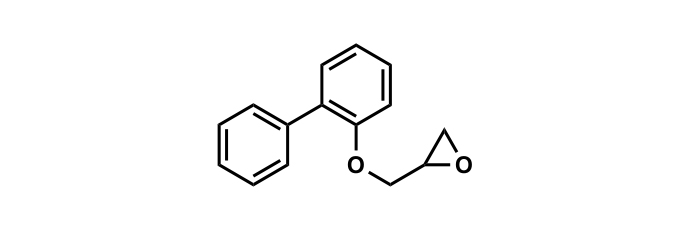
SWIPE
| Epoxy equivalent (g/eq.) |
Viscosity (mPa・s) |
Total chlorine content(%) |
Color value (APHA) |
Water solubility(%) | Packaging |
|---|---|---|---|---|---|
| 240 | 290 | 0.03 | 70 | insoluble | 18kg |
EX-146P
This product is a monofunctional epoxy compound known as p-tert-Butylphenyl glycidyl ether. It is hydrophobic and has low viscosity, making it suitable as a reactive diluent for electronic materials.
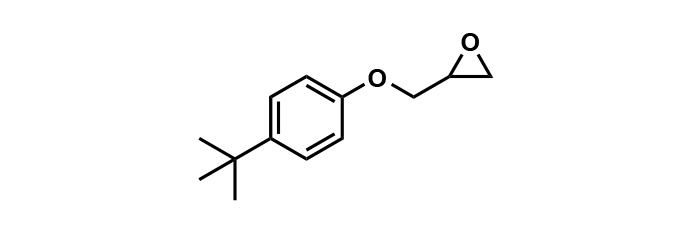
SWIPE
| Epoxy equivalent (g/eq.) |
Viscosity (mPa・s) |
Total chlorine content(%) |
Color value (APHA) |
Water solubility(%) | Packaging |
|---|---|---|---|---|---|
| 210 | 17 | 0.01 | 1 | insoluble | 18kg |
Get in touch!
For inquiries or to request a sample of Low-Chlorine DENACOL, please reach out to our team. We're ready to assist you with personalized service and expertise.



